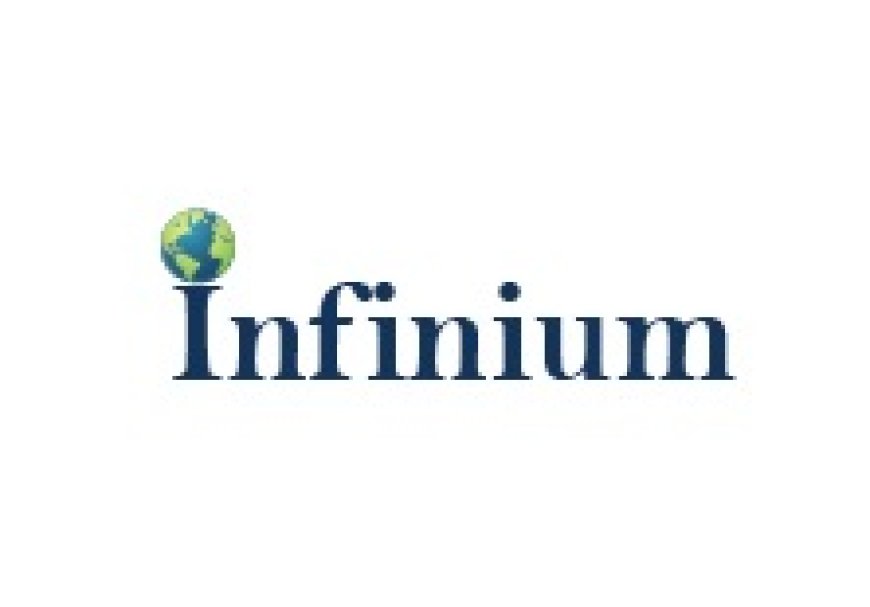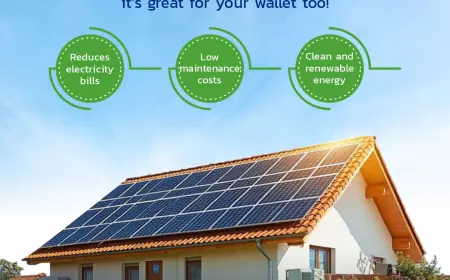Building on Strength: Wire Rod Market Poised for Steady Growth
This in-depth report by Infinium Global Research delves into the global and regional wire rod market, with a specific focus on the 2023-2030 timeframe.

Infinium Global Research Forges a Path: Wire Rod Market Poised for Steady Growth (2023-2030)
This in-depth report by Infinium Global Research delves into the global and regional wire rod market, with a specific focus on the 2023-2030 timeframe. It provides a granular analysis of market segments and sub-segments, along with a thorough examination of drivers, restraints, and macro indicators influencing the market's trajectory over the coming years.
Get Sample Pages of Report: https://www.infiniumglobalresearch.com/reports/sample-request/4669
The report offers a comprehensive picture of the wire rod landscape, encompassing trends, forecasts, and market size estimations (in dollars). Notably, it projects the global wire rod market to experience a [insert specific CAGR identified in the report] Compound Annual Growth Rate (CAGR) throughout the 2023-2030 timeframe. Wire rods are the foundation for a variety of metal products. Produced by hot rolling steel billets, these round-section rods are coiled for easy storage and transportation. While traditionally a multi-step process involving heat treatment and wire drawing, manufacturers are constantly innovating to streamline production and reduce costs. Wire rods come in various materials like carbon steel, aluminum, and copper, each suited for specific applications. Careful handling with appropriate equipment like slings and hooks is crucial to avoid damage during transportation. Manufacturers prioritize high dimensional accuracy and precision in their wire rods. Additionally, they leverage advanced technologies to ensure optimal thermodynamic properties, ultimately achieving a finer quality finished product.
Market Dynamics:
1.Drivers:
· Booming Construction: Rapid development in emerging economies like China, India, and Southeast Asia is driving a surge in construction activity. Wire rods, used as reinforcement in buildings and infrastructure projects, are a prime beneficiary of this trend.
· Industrial Applications: Wire rods are a versatile material used in diverse industries like automotive, manufacturing, and energy. Growth in these sectors translates to a rising demand for wire rods for components like springs, tires, and power transmission lines.
· Focus on Sustainability: Steel wire rods offer advantages like recyclability, making them an attractive choice in an era of stricter environmental regulations for construction materials and car parts. This eco-friendly aspect is expected to further propel market growth.
2.Opportunities:
· Expanding Application Areas: The increasing use of wire rods in cold drawing, cold forming, welding, and spring applications presents a significant opportunity for manufacturers and suppliers. These applications find use in various sectors, creating a broader market base.
· Technological Advancements: Innovations in steel production processes hold the potential to improve product performance, reduce production costs, and enhance overall efficiency. This can lead to a more competitive wire rod market and potentially unlock new applications.
· Government Infrastructure Initiatives: Investments in public infrastructure projects like roads, bridges, and railways by governments can significantly boost demand for wire rods.
Market Segmentation
1.By Type:
· Material: This segment encompasses various materials used in wire rod production, including:
· Aluminum: Lightweight and corrosion-resistant, ideal for electrical applications.
· Steel: The most common type, offering strength and versatility for construction and manufacturing.
· High Carbon Steel: A sub-category known for its high tensile strength, used in springs and wires.
· Alloy Steel: Combining steel with other elements for specific properties, employed in demanding applications.
· Others: This category includes less common materials like copper for specialized electrical applications.
2.By Size:
· Wire rods come in a range of diameters to suit various uses. Common size sub-markets include:
· 5.0 mm to 10.0 mm: These popular sizes cater to a wide range of applications in construction and manufacturing.
· Others: Larger or smaller diameters may be used for specific purposes.
3.By End-User:
· This segment focuses on the industries that utilize wire rods:
· Construction: The largest consumer, using wire rods for reinforcement in buildings and infrastructure.
· Industrial Manufacturing: Wire rods find application in various industries, including:
· Automotive (springs, tires, suspension systems)
· Appliance manufacturing
· Machinery and equipment production
· Power and Energy: Steel wire rods are crucial for:
· Transmission lines
· Cables
Regional Analysis
1.North America:
· Market Segmentation: Analyzed by type (material and others), size (diameter range), end-user (construction, manufacturing, etc.), and individual countries within the region.
· Key Insights: Identify dominant wire rod types, popular sizes, major user industries, and growth potential in specific North American countries.
2.Europe:
· Market Segmentation: Similar to North America, the report delves into type, size, end-user, and individual European countries.
· Key Insights: Understand the European preference for wire rod materials, sizing trends, prevalent applications, and promising markets within the region.
3.Asia-Pacific:
· Market Segmentation: A breakdown by type, size, end-user, and individual countries in the Asia-Pacific region.
· Key Insights: Gain valuable information on the most used wire rod types in Asia-Pacific, popular diameter ranges, leading consumer industries, and high-growth markets within the region.
4.Rest of the World (RoW):
· Market Segmentation: The report explores the RoW market by type, size, end-user, and sub-regions.
· Key Insights: Uncover the dominant wire rod materials and sizes used in the RoW region, along with the primary industries driving demand. Additionally, the report provides insights into promising sub-regions for future growth.
Report overview: https://www.infiniumglobalresearch.com/reports/global-wire-rod-market
Competitive Landscape
· ArcelorMittal
· Ivaco Rolling Mills
· EVRAZ
· Gerdau
· JFE Steel Corporation
· NIPPON STEEL & SUMITOMO METAL CORPORATION
· Central Wire Industries
· Emirates Steel
· Kaiser Aluminum
· Hebei Sakaguchi Stainless Steel
Future outlook
The future of the wire rod market (2023-2030) looks promising, driven by a confluence of trends. Rising construction activity in developing economies, expanding applications in various industries, and a growing focus on sustainable materials like steel will fuel market growth. Technological advancements that enhance product performance and reduce production costs will further propel the market forward. However, factors like fluctuating raw material prices and stricter environmental regulations need to be addressed for the market to reach its full potential. By adapting to these trends and challenges, market players can capitalize on the numerous opportunities this sector presents.
Conclusion
This report by Infinium Global Research provides a comprehensive analysis of the global wire rod market for the 2023-2030 timeframe. It examines market segments, drivers, restraints, and trends that will influence market growth. The report projects a healthy CAGR for the market, driven by factors like booming construction activity, rising use in various industries, and a focus on sustainable materials. Opportunities lie in expanding application areas, technological advancements, and government infrastructure initiatives. The report also details market segmentation by type, size, and end-user, along with regional analysis and a competitive landscape overview. Overall, the future of the wire rod market appears promising, but navigating fluctuating raw material prices and stricter environmental regulations will be crucial for market players to fully capitalize on the potential.
What's Your Reaction?
 Like
0
Like
0
 Dislike
0
Dislike
0
 Love
0
Love
0
 Funny
0
Funny
0
 Angry
0
Angry
0
 Sad
0
Sad
0
 Wow
0
Wow
0

















































